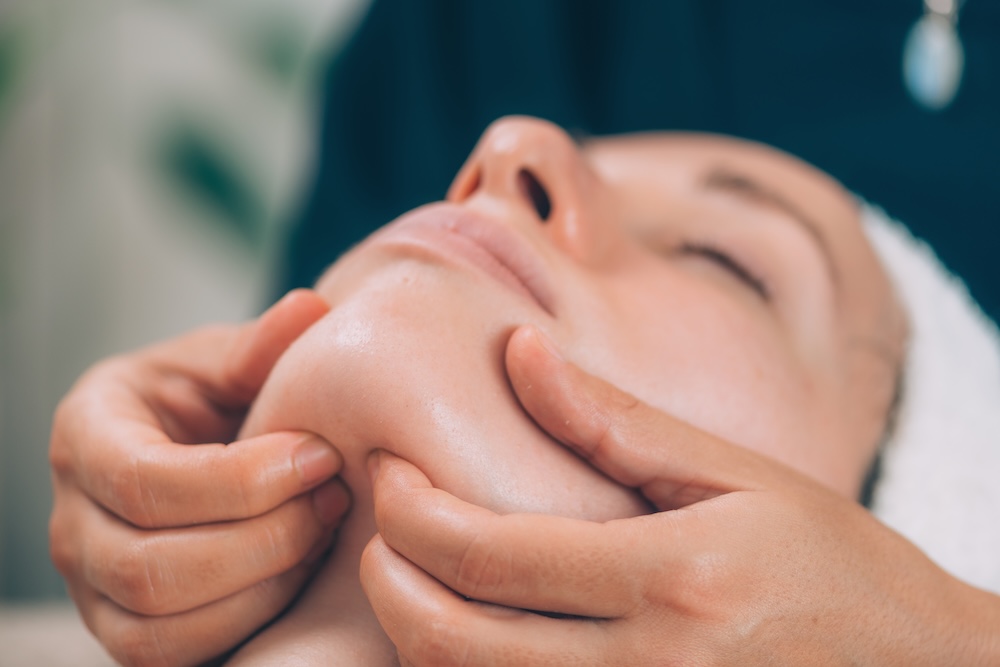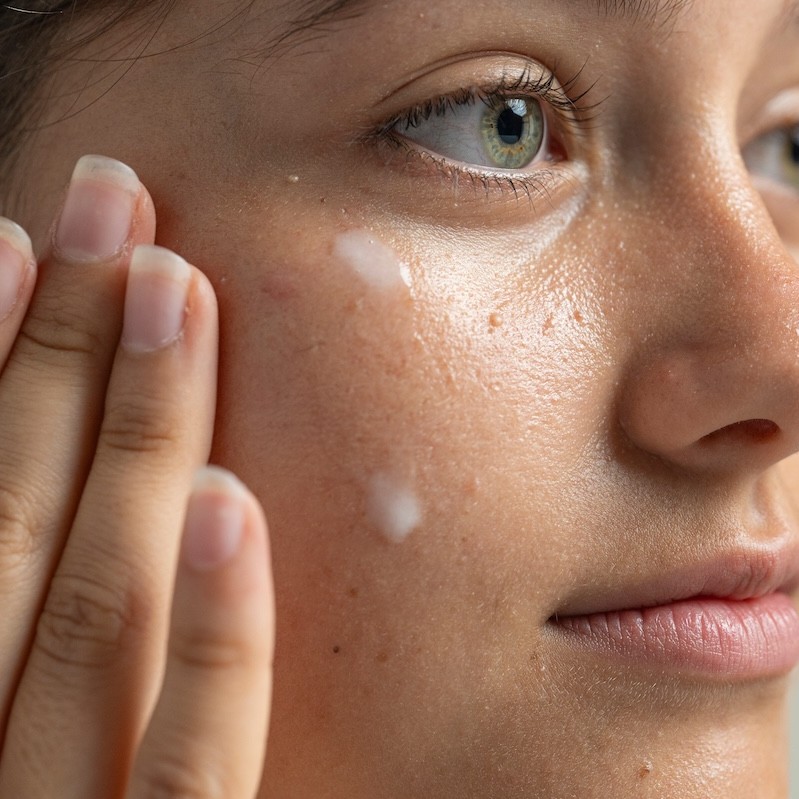Facials offer more than just skin-deep benefits, providing clients with powerful emotional and mental wellbeing advantages, including stress relief, mood elevation and enhanced self-esteem
In the beauty and spa industry, facials are often presented primarily as skin-improvement treatments, targeting fine lines, clarity, hydration or texture.
Yet the emotional impact of facials is profound and often underappreciated. When therapists understand and convey how facial treatments support client wellbeing, they can deepen client trust, loyalty and satisfaction, while practising with more intention and purpose.
The science behind facial therapies and stress relief
Parasympathetic activation: why facials calm
The gentle touch, rhythmic massage and slow pace of a facial stimulate the parasympathetic nervous system – the body’s “rest and digest” mode.
Hannah White, head of education at skincare brand Monuskin and device manufacturer Carlton Professional, explains, “Your gentle touch and the rhythmic motions of facial techniques stimulate the parasympathetic nervous system.
"This can lead to a decrease in cortisol levels (the stress hormone) and an increase in the release of endorphins, the body’s natural mood elevators.”
Award-winning massage therapist Hayley Snishko, owner of Home Sanctuary and founder of Mind Body Touch Training, adds, “These changes include lowering of the heart rate, blood pressure, breathing rate and cortisol.
“It promotes digestion, healing and overall relaxation and energy conservation after stress. Mentally this then helps bring a sense of calm for our clients.
Facial massage can also release endorphins, and on top of all that, oxytocin (aka the bonding hormone) really helps create feelings of connection and safety.”
Together, these responses mean facials can act as mini “resets” for the nervous system, allowing clients to shift out of fight-or-flight mode and into a state of deep rest, which benefits not just mood, but overall health.
Facial massage: the bridge between physical and emotional
Many facial treatments incorporate hands-on massage techniques. These play a vital role in both tension release and emotional relief:
- Targeting muscle tension: Snishko notes that stress and anxiety often manifest as holding patterns, particularly in the face and neck (jaw clenching, tension headaches). By working over these points, the therapist can create small physical shifts that feed back to the brain, easing emotional load.
- Rhythmic distraction: The repeated, calming motions of massage help clients disengage from intrusive thoughts or mental “spirals”.
- Emotional loosening: Because our face is tied to identity, expression and communication, loosening habitual expressions and tight muscles can feel deeply cathartic.
Snishko observes, “When we massage our clients’ faces, we’re loosening those held expressions. This can be really powerful.”
In short: facial massage can be a direct pathway to emotional and cognitive relief.

Emotional benefits of professional facials
Boosting self-esteem and confidence
Visible skin improvements can carry outsized emotional weight. As White puts it, “When clients see visible improvements in their skin, it can have a profound effect on how they feel about themselves. Clear and radiant skin can significantly boost a client’s self-image.”
When someone experiences clearer, healthier skin over a series of treatments, it cements the sense that they matter and that investing time in themselves yields tangible returns.
That shift in self-worth can ripple into everyday interactions and confidence.
Personalised care and trust
A facial is an intimate, one-on-one service. The therapist has the space and time to listen, respond, adjust and attend to client comfort.
White emphasises this human dimension, commenting, “The personalised attention and care you provide during a facial treatment can make clients feel valued and special.
“This feeling of being cared for can enhance their sense of self-worth. The one-on-one time you spend allows you to engage in meaningful conversations, listen to their concerns and provide personalised advice.”
This isn’t just good for the client, it’s good business. The emotional connection created helps foster long-term loyalty, referrals and trust.
Emotional release and therapist awareness
Some clients may experience emotional responses, like tears, vulnerability and introspection, during or after a facial. Why? According to Snishko, “The activation of the parasympathetic nervous system allows the body to process emotions that often are suppressed when in fight or flight mode.
“Massage can cause an increase in our bonding hormone, oxytocin. So, when our clients are feeling cared for, this could trigger those unexpected emotions.”
Therapists don’t need to act as counsellors, but they can respond supportively: normalising emotional responses, providing space, maintaining professional boundaries and offering gentle reassurance.
Awareness of this possibility is an important aspect of professional self-care and client safety.

How therapists can enhance the mind-body connection during facials
Rituals that anchor calm
Snishko recommends integrating small, intentional rituals that help clients shift out of everyday stress and into a receptive state.
She advises, “Start your treatments with guiding a few grounding breaths, warming your hands before contact, placing heat pads under their feet and understanding their muscle holding patterns in their face.
“Make the client feel cared for and safe within your treatment space to allow them to focus on the treatment itself, and not their stresses or worries.”
Other ideas: soft music or nature sounds, gentle lighting changes, a short meditation or visualisation before starting, scented compresses or a brief check-in at the start.
Safe, nurturing environment
To support emotional wellbeing, therapists should prioritise:
- Clear communication and boundaries
- Professional scope and not acting as a therapist
- A clean, warm, welcoming space
- Subtle adjustments to client comfort (pillows, temperature, props)
- Unhurried pace and calm voice tone
- Warm hands, calm energy and non-intrusive presence
As Snishko says, “Clients need to trust us as therapists. It’s in the small things that trust is built, like warming our hands before touch, keeping our pace and tone calm and unhurried, and paying attention to their physical comfort at all times.”
Tailoring massage to their needs
Observe and adapt: if a client carries tension in the jaw, temples or neck, spend extra time there.
Vary the pressure and rhythm to match their emotional state: sometimes slower, lighter strokes are more appropriate; other times firmer work can feel grounding.
Encourage feedback and actively listen to what the client’s body is communicating.

Why viewing facials as holistic therapy benefits everyone
For clients: long-term wellbeing
By recognising facials as more than skin-deep, therapists help clients harness cumulative emotional benefits: reduced stress, higher confidence, improved sleep, more self-care, and possibly better skin outcomes (since stress and lack of sleep are known triggers for many skin conditions).
Snishko summarises, “Facials have the power not just to improve skin and boost confidence, but beyond this stimulate the parasympathetic nervous system, lower stress hormones and encouraging emotional release.”
For therapists: purpose and professional satisfaction
When therapists see beyond the purely aesthetic outcome, facial work becomes more meaningful.
As Snishko states, “Recognising and understanding the emotional value of facials helps us with a more mindful approach, deepening the client relationship and increasing professional satisfaction.”
This perspective can reduce burnout, inspire more thoughtful protocols and differentiate your practice in a saturated market.
Conclusion
Facials truly are more than skin deep. By understanding and communicating their emotional impact – stress relief, mood uplift, confidence support and emotional release – therapists can deliver a more holistic, meaningful experience.
For clients, a facial becomes a moment of respite and care. For therapists, it’s an opportunity to build deeper client relationships and a distinctive offering.
You might also like:




